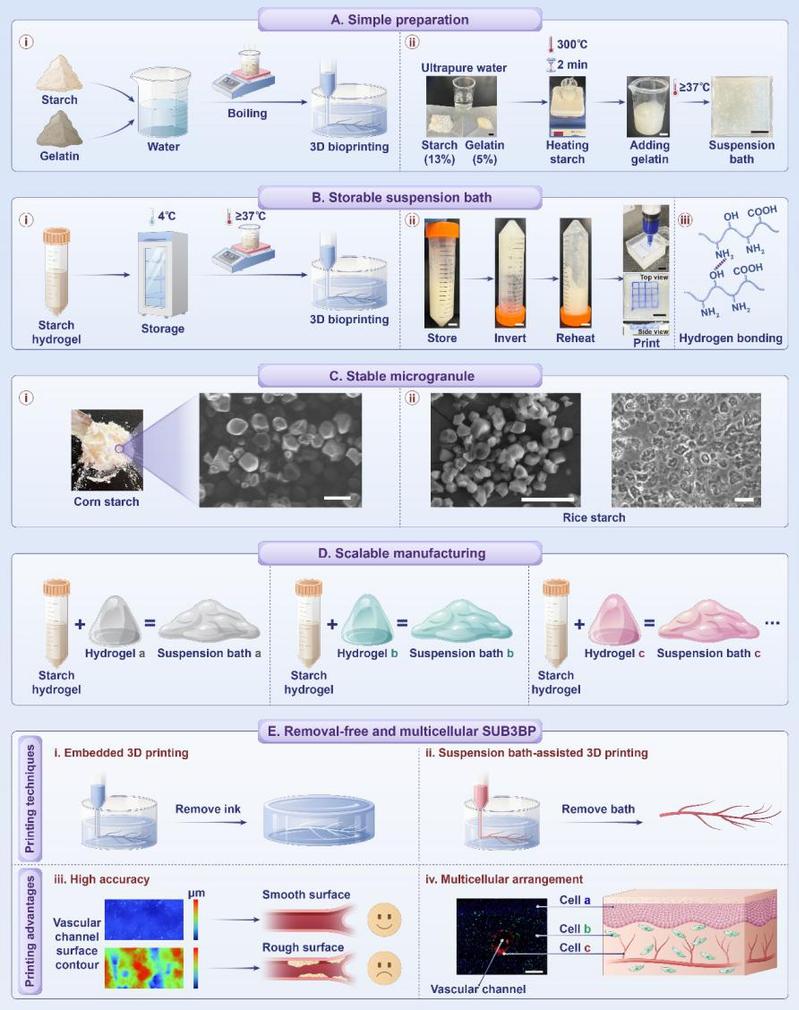Suspension bath-based 3D bioprinting (SUB3BP) is frequently used for fabricating artificial tissues with vascular structures. However, existing SUB3BP techniques encounter difficulties in fabricating biomimetic structures with multicellular layouts, such as suspension bath removal concerns, restricted material options, complex preparation protocols, and low accuracy.
A recent study proposed a simple, storable, stable, and scalable (4S) starch hydrogel to leverage the next-generation SUB3BP technique. The presented storable and biocompatible starch hydrogel, which has a simple preparation procedure and a stable microgranule, scaled up a wide range of hydrogels for removal-free and multicellular SUB3BP. The mechanism for using the 4S starch hydrogel as a suspension bath was demonstrated. Various printing scenes were achieved. The findings also displayed the benefits of fabricating highly accurate vascular channels and skin models with multicellular organization. The research findings were published in Advanced Materials under the title “Removal-Free and Multicellular Suspension Bath-Based 3D Bioprinting”.

Removal-free and multicellular SUB3BP in a 4S starch hydrogel.
Dr. LI Shuai, the first author of this paper, explained that 3D bioprinting has a high potential for fabricating in vitro tissues or organs. SUB3BP circumvents the need for support material when fabricating elaborate features in traditional extrusion 3D bioprinting. He added that the idea for this work was inspired by the use of starch as a thickening ingredient in culinary dishes. Moreover, this study shows that food-derived starch provides a biocompatible environment for cell growth and differentiation. Currently, the team is investigating the usage of 4S starch in therapeutic applications such as bone defect regeneration. The goal is to advance the clinical application of the next-generation SUB3BP technology and related biomaterials.
More information: The work’s co-first authors are Dr. LI Shuai, LI Jianping, and XU Jian from the First Affiliated Hospital, Zhejiang University School of Medicine (FAHZU). Prof. HE Yong of Zhejiang University and Prof. HU Yihe of FAHZU are co-corresponding authors.
Source: The First Affiliated Hospital, Zhejiang University School of Medicine